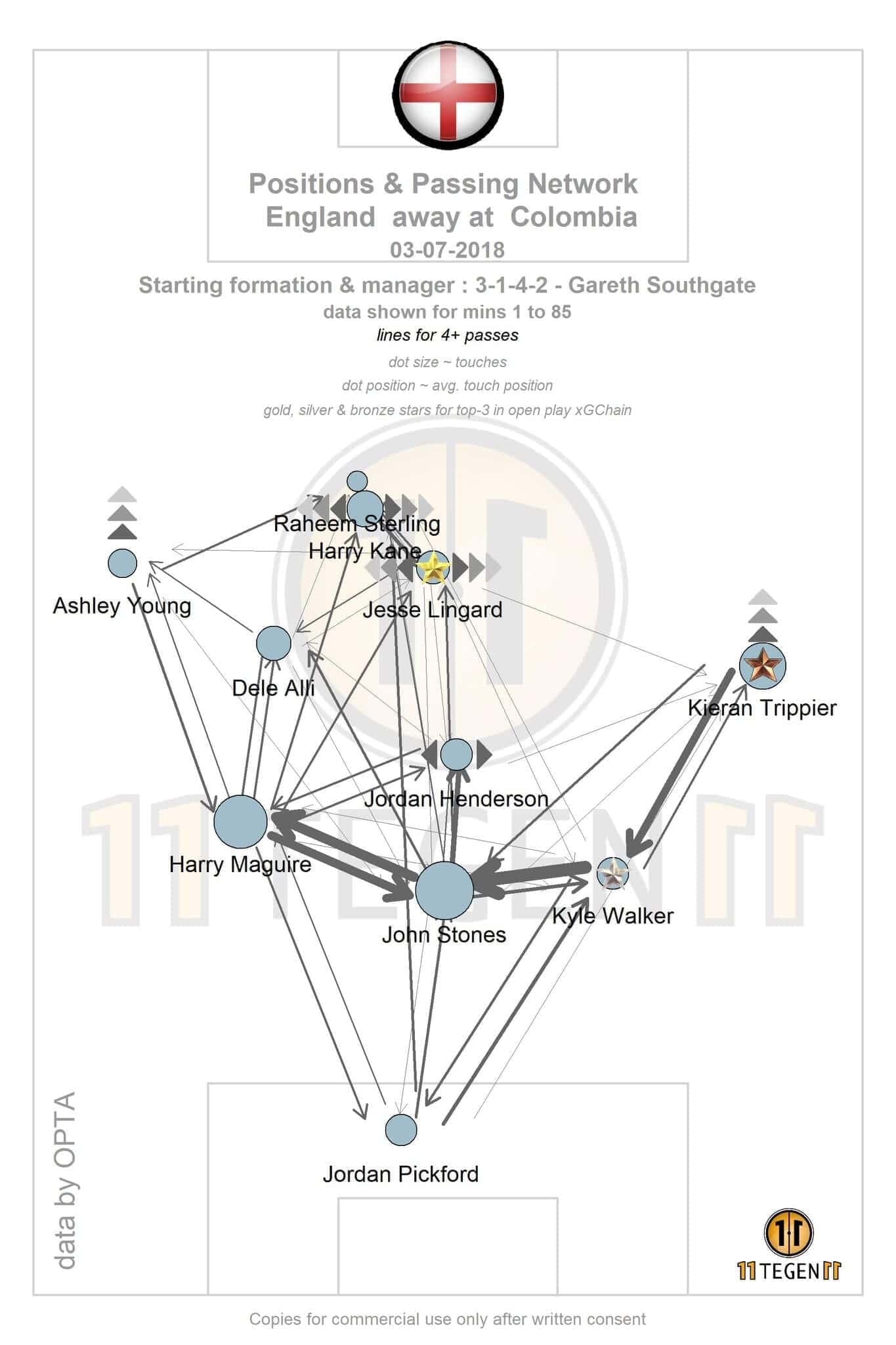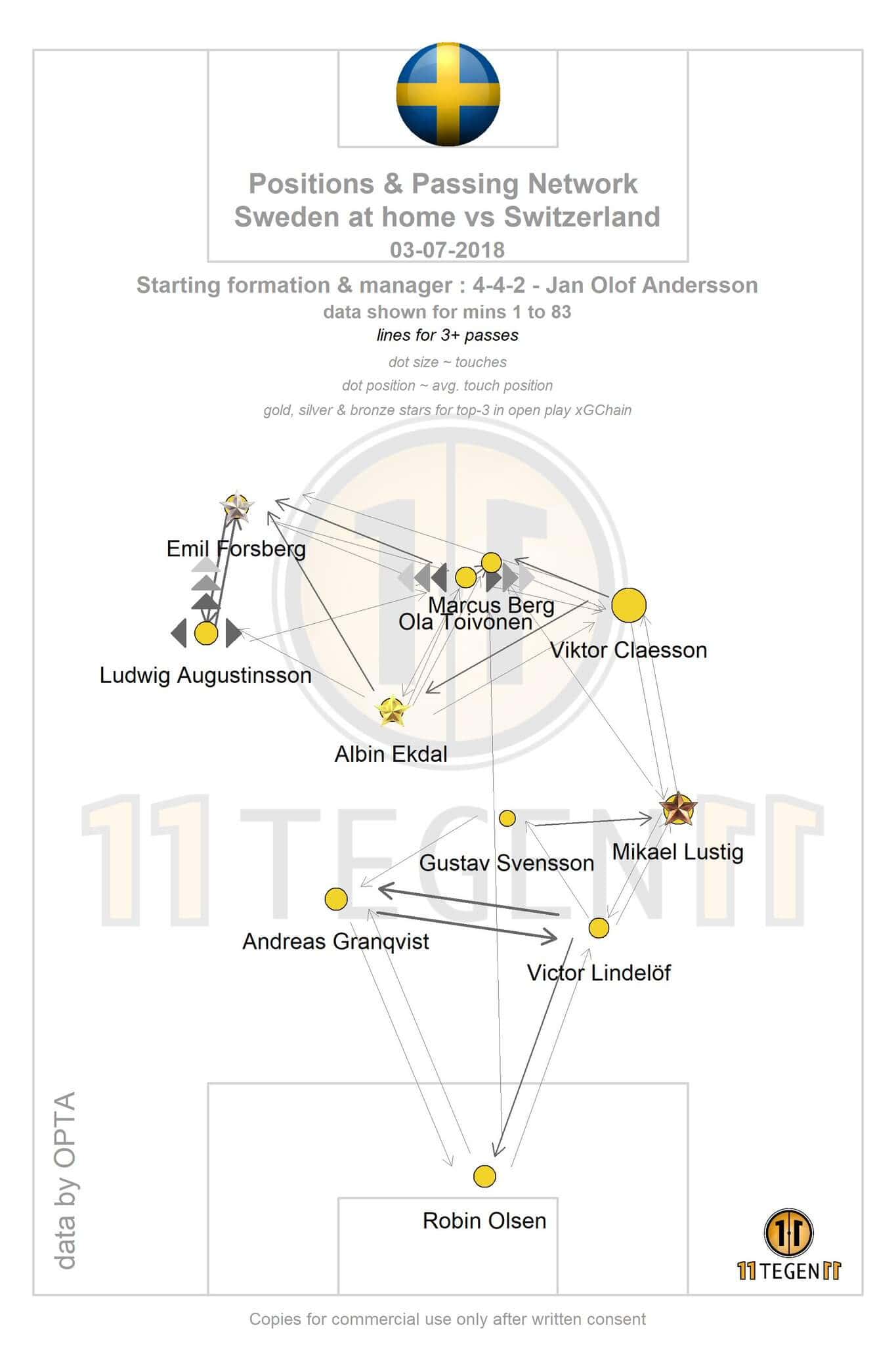The first of Saturday’s quarter-finals sees Sweden take on England in a clash between two sides who are low on creativity. The two sides have scored six and nine goals in four games respectively, with Sweden’s 3-0 win over Mexico and England’s 6-1 demolition of Panama skewing those numbers. It is quite clear that this is not a game where one can expect to see a hat-full of chances; it is more likely to be cagey, tense and may even go all the way to penalties. Having said that, Sweden have more than a decent chance of making the semi-finals for the first time since 1994. They are organised, difficult to break down and will provide a threat from set pieces; quite similar to their opponents on Saturday. Here are a few things the Swedes need to do in order to beat England:
Press the England backline
Gareth Southgate has been rightly lauded for his decision to use a 3-4-2-1 system at the World Cup, with three ball-playing centre-halves allowing England to play out from the back and retain a measure of control over possession. All of their opponents so far sat back and allowed them to build play from the defence, preferring to engage the press once the ball went out to the flanks or into midfield. However, England are vulnerable to a high press, with Jordan Henderson, the likely pivot in midfield, prone to giving away the ball in the face of sustained pressure. While Sweden are a side who prefer to sit deep, a change of tack for this game could pay an instant reward.
Push Forsberg high up the pitch
Kieran Trippier has probably been the best right-sided defender at the tournament; excellent defensively while creating the third most chances of any player before the quarter-finals began. Nevertheless, as a look at the pass map below from the Colombia game shows, Trippier is liable to leave a lot of space behind him, as is the case for most wingbacks in a 3-man system.

Sweden’s most creative player, Emil Forsberg plays off the left, and this could be a game where he could thrive given England’s system. Keeping Forsberg high up the pitch would pin Trippier back, also allowing Ludwig Augustinsson to advance from left-back; if Trippier chose to play up the pitch anyway, Forsberg would have a lot of room to break into on the counter-attack. As the pass map shows below, Forsberg and Augustinsson have tended to stay far further upfield than their counterparts on the opposite flank, and that tactic may especially come in handy against England: thwarting the opposition’s most creative player while enhancing their own.

Do not give away set-pieces
This one is a little obvious but bears repeating: Sweden need to ensure that they do not give away too many corners or free-kicks around the box. England’s best opportunities have come from set-pieces, either directly or via the penalties they have earned from them. Harry Kane may be leading the Golden Boot race, but he has scored only one goal from open play, which was a deflection he knew nothing about. For all of the praise that has been showered on Gareth Southgate’s progressive side, who were second only to Brazil for passes completed amongst the quarter-finalists, they have struggled to service their captain with chances. Their top three passers are John Stones, Kyle Walker and Harry Maguire – the three centre-backs, while they have also hit the second-lowest crosses of any team remaining at the World Cup, just ahead of their opponents on Saturday. All of this points to a team with a lot of sterile domination of the ball; the sort which Sweden will be able to deal with easily enough. However, they are imaginative and well-drilled from set-pieces, and while Sweden are of a similar sort, they could find it difficult to forge a path to the semi-finals unless they block England’s mischief-making from corners and free-kicks.
Please check out our analysis of how Spain and Hierro failed at the 2018 FIFA World Cup.




Comments